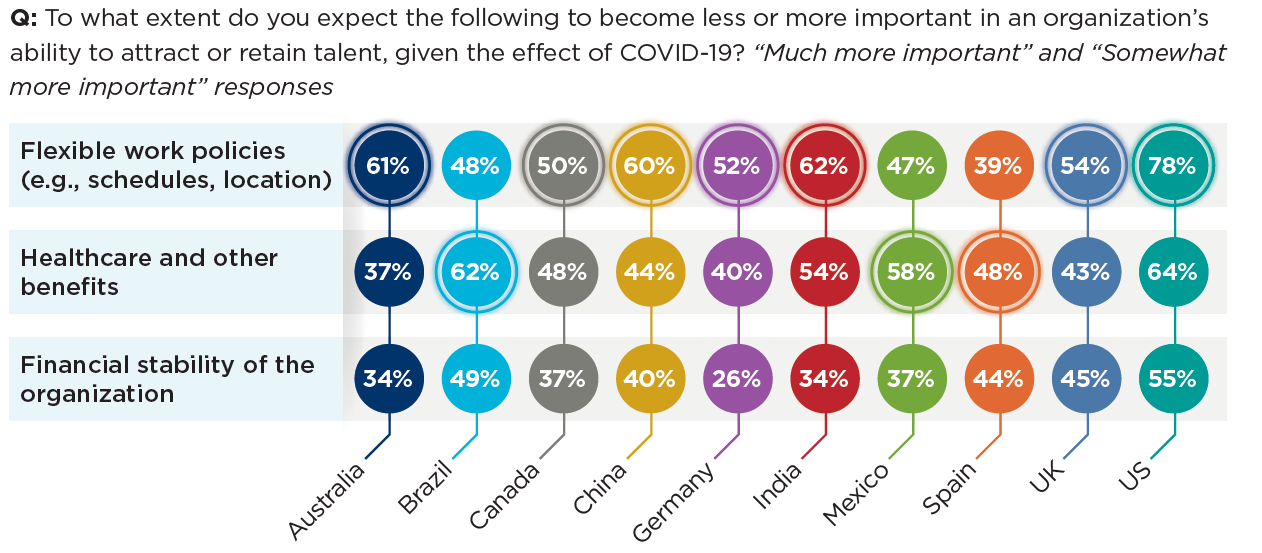Blog | 23 Feb 2021
Five reasons remote work is harder than you think

Graeme Harrison
Director of EMEA, Macro Consulting

Widespread adoption of remote work is expected to be a lasting legacy of the pandemic. But this huge shift in where and how people do their jobs is going to be more challenging—and costly—than many executives may expect.
Remote work is seen as a way to limit costs on office space and (as we saw in research conducted with the Society for Human Resource Management and SAP) executives surveyed in the third quarter of 2020 overwhelmingly said their employees had adjusted well to new ways of working. Going forward, flexibility on location is widely seen as a way of attracting and retaining top talent.
 So far, so good. Look closer, though, and the death of the workplace is greatly exaggerated. To start with, many respondents to another recent survey, conducted for Cognizant’s Center for the Future of Work, told us in mid-2020 that they expect their people to be back on-site when they can. And for any organization, the challenges of maintaining a healthy, productive remote workforce are non-trivial and multifactorial. Key issues include:
So far, so good. Look closer, though, and the death of the workplace is greatly exaggerated. To start with, many respondents to another recent survey, conducted for Cognizant’s Center for the Future of Work, told us in mid-2020 that they expect their people to be back on-site when they can. And for any organization, the challenges of maintaining a healthy, productive remote workforce are non-trivial and multifactorial. Key issues include:
1.  The best workplace is a hybrid workplace. A lot of people will want to head back to the office when they can—at least sometimes. Humans are social beings, and the spontaneity and creative spark enabled by shared spaces is hard to replicate digitally. Laszlo Bock, CEO of HR company Humu and a former SVP of People Operations at Google, says one-and-a-half office days per week provides an ideal mix of interaction and focus; as a long-time three-days-in/two-out guy, my ratio was a little different—and obviously your schedule has to suit your particular needs—but the case for dual locations is a strong one.
The best workplace is a hybrid workplace. A lot of people will want to head back to the office when they can—at least sometimes. Humans are social beings, and the spontaneity and creative spark enabled by shared spaces is hard to replicate digitally. Laszlo Bock, CEO of HR company Humu and a former SVP of People Operations at Google, says one-and-a-half office days per week provides an ideal mix of interaction and focus; as a long-time three-days-in/two-out guy, my ratio was a little different—and obviously your schedule has to suit your particular needs—but the case for dual locations is a strong one.
2. Remote work is an equity issue. Many jobs cannot be done remotely, creating a two-tier workforce for some companies. But even roles that can be filled from home may not be sustainable for employees facing family pressures, space constraints, and other issues. We did some research on office noise that showed major perception gaps about workplace conditions between executives with their own offices and staffers in open-plan spaces—and the same logic probably applies to remote offices. It is important for senior management to remember that not everyone lives like a boss or will have the same ease of working from home, so providing workspaces for at least some workers may remain a necessity.
3. Many cost savings are really cost shifts. Bandwidth suitable for a work environment is not cheap. Neither are remote data security, or good laptops, second screens, collaboration software, mobile devices, and desk chairs that don’t cause backaches. Even pens and post-its add up over time. If you really want to leverage remote work as a way of attracting and retaining the best people, you will have to outbid your rivals in ways that go beyond salary and standard benefits.
4. Working from home can be exhausting. At first people forced to go remote were happy to be safe, employed, and wearing sweatpants. Over time, though, many of us found our jobs threatening to take over our lives. Maintaining balance requires serious and sustained support from management—and that is in addition to regular skills-and-career training, which have to be updated for remote delivery as well. Our research with SHRM and SAP shows most companies have not adjusted to these new realities.
5. Culture is a hands-on job. Remember that hollow feeling when you raised a cocktail to toast the season at your company’s Zoom holiday party? Miss those break-room recaps of the weekend’s big game or the latest episode of a must-see streaming show? Wish you could watch your mentor—or mentee—finesse a nuanced problem? Some of the experiences that build groups into teams, including vital jobs like on-boarding new hires, are just better in person, and we know that culture is a driver of business performance.
Remote work can be productive and healthy, but that does not mean it is easy—or easy to manage. The workplace of the future requires planning and investment, and if you have not started you are already falling behind.
Tags:
You may be interested in

Post
Amid disruption, what can US office learn from retail?
We examined the disruption of generative AI at the US county level. We identified several metros – Atlanta, Denver, New York, San Francisco, and Washington DC – that had at least one county with the highest percent of displaced workers from AI.
Find Out More
Post
Leading through the great disruption: How a human-centric approach to AI creates a talent advantage
The Oxford Economics' and Adecco Group’s Business Leaders research investigates the changing world of work from the executive perspective. Our research focuses on the impact on talent strategy of Artificial Intelligence (AI) and Generative AI (GenAI).
Find Out More
Post
Thriving beyond boundaries: Human performance in a boundaryless world
In collaboration with Deloitte, Oxford Economics surveyed 1,000 global executives and board leaders in order to understand their perspectives on emerging human capital issues.
Find Out More